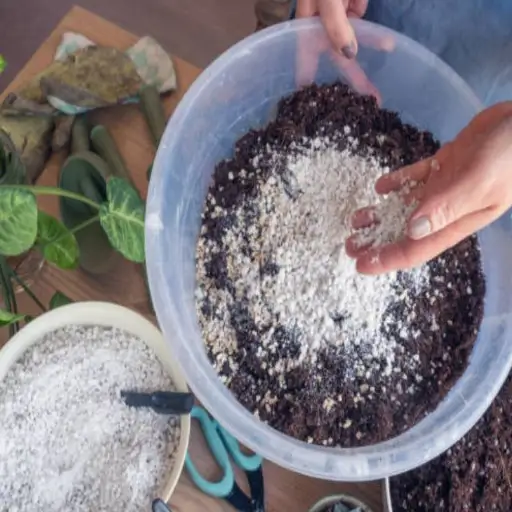Choosing the right fertilizer is critical in the life of a good plant, especially when a crop, flower, or garden needs or requires a very specific nutrient balance. Low nitrogen fertilizers aid the plant varieties that must grow with a reduced intake of nitrogen; they help avoid huge leaf growth while encouraging root growth, fruit formation, and, through that, the full life of the plant. As the agricultural and gardening industry keeps changing, 2025 has brought many new low-nitrogen fertilizer options to the table. This guide will give you the top 10 low nitrogen fertilizers for 2025, outlining their salient features, advantages, and suitable applications. This article will help you create the perfect environment for plant nurturing, whether you have been gardening for years or are embarking on a new project.
Understanding Low-Nitrogen Fertilizers
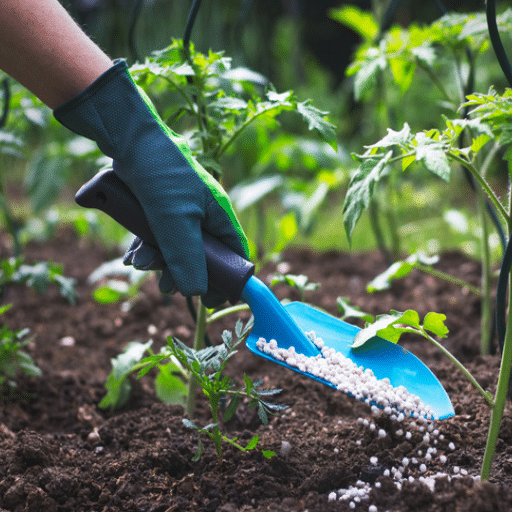
What is Low-Nitrogen Fertilizer?
A fertilizer with low nitrogen is a specially manufactured fertilizer prepared with lower nitrogen content as compared to the commonly available fertilizers. It is a major macronutrient beneficial for plants and promotes vegetative growth, such as leaf and stem formation. But for plants that need equal or less nitrogen supply, such as flowering or fruit-bearing plants, fertilizers with lower nitrogen levels may prove more beneficial. Such fertilizers enable balanced growth, giving the plants enough leaves without hindering the growth of flowers or fruits.
Being low in nitrogen, these fertilizers avoid creating nutrient imbalances in the soil. Too much nitrogen contributes to nutrient runoff, a factor that may lead to damage to surrounding ecosystems and water bodies. By turning to low-nitrogen fertilizers, gardeners and agriculturists can thus take care of the environment as well as offer targeted sustenance to plants. Such products are commonly available and in several ratios, with nitrogen intentionally reduced with reference to phosphorus and potassium, so as to cater to the needs of particular plants and soils.
These low-nitrogen fertilizers can be applied to landscapes, gardens, and crops where slow and sustainable growth is preferred. The majority of ornamental plants, shrubs, and trees prefer low nitrogen levels, as it allows the root system and reproductive structures to develop more rapidly. These fertilizers also play a major role in combating soil erosion and safeguarding fragile ecosystems in restoration works. The type of fertilizer that is chosen ensures the plants get the correct nutrients without adverse effects from overdosing on nitrogen.
Importance of Low Nitrogen in Soil Health
Low nitrogen in soil is maintained for long-term soil health, and hence its sustainability. Excess nitrogen disrupts a natural nutrient balance; the excess induces acidification of the soil, leaching of nutrients, and ultimately loss to the microorganisms essential for the soil-reduction of fertility potentials with an eventual stimulus of erosion and degradation in the soil-sites. These conditions lead to soil that grows crops tending to high vegetative growth, an overall detriment in yield quality, and decreased nutrient densities within the foods.
Lower nitrogen concentrations promote healthier soil ecosystems by allowing a wider diversity of microorganisms, fungi, and bacteria to exist. These organisms are critical to nutrient cycling, decomposition of organic matter, and the formation of soil structure. For example, mycorrhizal fungi would create symbiotic relationships with plant roots to help with nutrient uptake and increase plant strength. In contrast, excess nitrogen can interfere with these beneficial interactions.
From an environmental standpoint, low-nitrogen soils minimize nitrate runoff into waterways, which may cause eutrophication ecological hazard characterized by an overgrowth of algae and oxygen depletion. By limiting nitrogen input, farmers may ensure not just water quality for the environment but also soil productivity for coming generations. Management measures that include crop rotation, utilization of cover crops, and the application of organic fertilizers based on compost are crucial to ensuring nitrogen balance while defending soil or ecosystem integrity.
How Low Nitrogen Fertilizers Work
Low nitrogen fertilizers function by providing plants with just a limited amount of nitrogen required for vital growth processes such as photosynthesis and protein synthesis. Thus, in contradiction to traditional fertilizers with high nitrogen levels, these sustainable products aim at reducing the risks of nitrogen leaching into groundwater and having excess nitrogen in the soil. Such controlled management serves the dual purpose of preventing environmental hazards and wasting nutrients.
In many cases, slow-release formulations supply nitrogen to plants for several months, matching the plant’s needs and nutrient runoff possibilities. Such fertilizers can also be combined with other essential nutrients like potassium and phosphorus, retaining the overall health of the soil with support for balanced plant growth.
Any low-nitrogen fertilizer will fit in with the box of sustainable agricultural practices. Reduction in the nitrogen input will maintain crop yield with fewer environmental problems. Long-term advantages are water-quality improvement, reduction of greenhouse gases that are mostly nitrogen compounds, and improved soil microbial activity. The use of these fertilizers is one of the steps for the support of productive and environmentally friendly agricultural practices.
Benefits of Using Low-Nitrogen Fertilizers
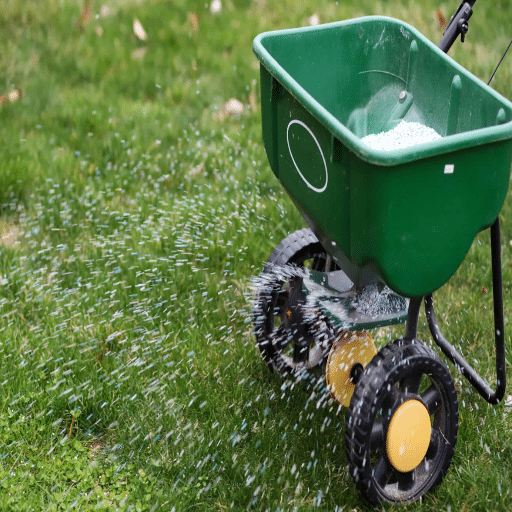
Improved Soil Health and Structure
The use of low-nitrogen fertilizers benefits soil health and structure by lowering the accumulation of nitrogen compounds in excessive quantities within the soil profile. Excessive fertilization with nitrogen leads to the extrusion of soil organic matter and instability in soil nutrient cycles, which brings harm to beneficial microorganisms. Being substances of low nitrogen content, these fertilizers maintain healthy microbial communities, which are important for such activities as nutrient mineralization and the breakdown of organic matter. This condition maintains the soil porosity, retention of water, and at the same time, lessens the possibility of compaction, supporting healthier root growth and greater ability to combat erosion.
Long-term application of high-nitrogen inputs is shown by scientific studies to acidify soils, disturb enzymatic activity, and reduce the cation exchange capacity, ultimately resulting in less fertile soils. Low-nitrogen alternatives diminish these threats and preserve the soil pH near optimal conditions, thus preventing acidification. Also, it retains the supply of important soil macroelements like K and P that would otherwise be leached due to the oversupply of N, hence providing an environmentally sound approach for ensuring sustainable nutrient supply to crops.
Combining low-nitrogen fertilizers with soil management further decreases the risk of hardpan formation, an impermeable, compacted soil layer for roots and water. Such fertilizers, in conjunction with precision agriculture techniques like soil testing and calibrated fertilizer applications, help crops realize their full yield potential while enhancing, in the meantime, the structure of our agricultural soils. Thus, they serve as a sustainable farming tool, biorationally emphasizing production and conservation.
Support for Specific Plant Types
Besides being the best fertilization method for maximum agricultural production and soil health, the approach of land-use planning must consider various plant or crop types. For instance, corn and wheat will gain from fertilizers with a higher nitrogen content. That is to say, nitrogen-demanding crops require a greater quantity of nitrogen in their vegetative growth stage. On the other hand, legumes such as soybeans and alfalfa fix atmospheric nitrogen through their symbiotic relationship with rhizobia bacteria, thus requiring less nitrogen input. Phosphorus-based fertilizers for such crops would be useful to encourage good root development and flowering.
Perennial plants, such as fruit trees and vines, are generally recommended for a balanced application of NPK, varying according to the growth stage: nitrogen is required for early leaf and shoot growth, while potassium is needed during the later stages for fruit development and quality. Also, micronutrients such as calcium, magnesium, and boron are important in preventing disorders such as blossom end rot in tomatoes or poor fruit set in apples.
With enhancements in crop modeling and precision agriculture, fertilizers can now be applied more sparingly, in terms of specific plants, soils, and environmental factors. Using modern technologies such as GPS-guided tractor equipment, soil mapping, and remote sensing, nutrients can be applied to the soil at different permeation rates and times relative to crop physiology. This agronomic technique ensures greater yield while also restricting nutrient leaching; thus, the method perpetuates itself as sustainable agriculture. Data-based management promotes the delivery of nutrients by crop requirements, along with a slight emphasis on ecological conservation.
Environmental Impact and Sustainability
With precision agriculture, a paradigm shift has been realized in reducing the impact of conventional agriculture on the environment and promoting sustainability. This is justifiable because such approaches discourage the heavy use of fertilizers and pesticides, the major causes of degradation of soil, water pollution, and biodiversity loss. Nutrient application is controlled and applied exactly as per the needs of the crop, so the runoff in water bodies causing eutrophication is lessened. Also, by means of GPS-assisted tilling, only sites that need treatment are targeted for application, thereby disturbing the rest of the ecosystem in the least.
A greater propagation of modern agricultural technology involves profiting from remote sensing and geographic information systems to keep in view and manage environmental conditions. For instance, satellites or drones with multispectral imaging sensors can detect abnormal changes in crop health or soil conditions, or moisture levels. Such a great supervision of environmental parameters indeed helps in harnessing a broader understanding of ecological interplay and, consequently, allows farmers to make the right informed decisions. Studies have shown that such technology reduced the application of nitrogen fertilizer at least by 20% without ruining crop yield, thereby benefiting environmental policing straight away.
Beyond this, the conservation side of precision agriculture is reflected in resource-use efficiency maximization. Water is managed by using drip irrigation systems linked to soil moisture sensors, which hydrate crops with minimum wastage. Hence, there is less pressure on freshwater resources, especially in drought-prone areas. Over time, crop rotation and cover cropping are favorable to soil health as they diminish erosion and increase carbon sequestration when practiced alongside precision agriculture, thereby leading to sustainability in the long run. Thus, these improvements promote worldwide sustainability goals so that agricultural activities remain productive without sacrificing the natural resources required by future generations.
Key Components of Low-Nitrogen Fertilizers
N-P-K Ratio Explained
The term N-P-K ratio versions are a standardized way to indicate the relative content of these prime macronutrients in fertilizers. Nitrogen encourages fast growth in plants and development of leaves and chlorophyll, whereas phosphorus promotes rooting, flowering, and seed setting by encouraging the energy transfer processes within the plant. Potassium increases the overall vigor of the plant, makes it more resistant to diseases, and controls water uptake and enzyme activity.
A label of a fertilizer like 10-20-10 implies 10% nitrogen, 20% phosphorus, and 10% potassium by weight; the remaining percentage is usually some inert filler or secondary nutrients that improve soil structure and help plant growth. Such N-P-K patterns are adjusted for agricultural practices according to the growth needs of particular crops and the nutrient profile of soils, determined through soil tests.
Setting the right N-P-K ratio—that is, to suit the microclimates, soil types, and crop cycles in question—is key to precision fertilization. Recently, data analytics and geospatial technologies have been integrated to help calculate such balances. Besides optimizing nutrient use efficiency (NUE), this prevents several environmental hazards, with the major ones being leaching and emission of greenhouse gases. Thus, it remains a core agronomic principle in modern-day farming.
Role of Phosphorus and Potassium
Phosphorus and potassium are two major macronutrients required by a plant to grow, with specific and interrelated roles in physiological and biochemical processes. Phosphorus is important for energy transfer in the plant because adenosine triphosphate (ATP) serves as a storage and transfer system for energy within the plant. Potassium assists in water intake and regulation, activates enzymes, and confers tolerance against stress.
In-Depth Roles of Phosphorus:
- Energy Transfer and Storage: Phosphorus occurs in ATP and nucleic acids and is involved in the transfer of energy during or between metabolic processes, such as photosynthesis or glycolysis.
- Root Development: Good growth of strong root systems for taking water and nutrients is made possible through phosphorus supply.
- Flowering and Seed Production: It is needed for the reproductive stage to enhance flower formation, seed development, and yield.
- Photosynthesis Efficiency: Phosphorus is necessary for chlorophyll synthesis and enhances the plant’s ability to convert sunlight into chemical energy.
- Cellular Structure and Function: It helps in the synthesis of phospholipids that form the cellular membranes.
Detailed Functions of Potassium:
- Water Regulation: Potassium is essential for the opening and closing of stomata to optimize water use efficiency and minimize water loss via transpiration.
- Enzyme Activation: Potassium activates more than 60 enzymes in plants that influence protein synthesis and carbohydrate metabolism.
- Resistance Improvement: Enhancing resistance to drought, salinity, and temperature extremes by stabilizing osmotic pressure in plant cells is potassium.
- Transport of Nutrients and Sugars: Supply to the functioning of the vascular tissues of the plant is ensured with potassium, moving nutrients, water, and organic matter such as sugars.
- Improved Quality of the Crop: Potassium enhances the size, flavor, texture, and shelf life of harvested crops, which directly determines their market value.
On the other hand, combining phosphorus and potassium management ensures the optimum conditions for plant growth, higher stress tolerance, and maximum yield potential. Integrating precision agriculture methods for soil P and K assessment can further enhance nutrient application, thus promoting sustainability alongside productivity.
Comparing Low-Nitrogen vs. High-Nitrogen Fertilizers
Low nitrogen stimulates root and fruit development, while a high nitrogen content produces lush foliage and rapid growth.
| Aspect | Low-Nitrogen | High-Nitrogen |
|---|---|---|
| Purpose | Roots/Fruits | Leaves/Foliage |
| Ratio | Low-N (e.g., 2-10-10) | High-N (e.g., 20-10-10) |
| Usage | Flowers/Fruits | Lawns/Crops |
| Hazard | Low Burn Risk | High Burn Risk |
| Effect | Balanced Growth | Rapid Growth |
| Phase | Flowering Stage | Early Growth |
| Examples | Bone Meal, Kelp | Urea, Ammonium |
Top 10 Low-Nitrogen Fertilizers for 2025
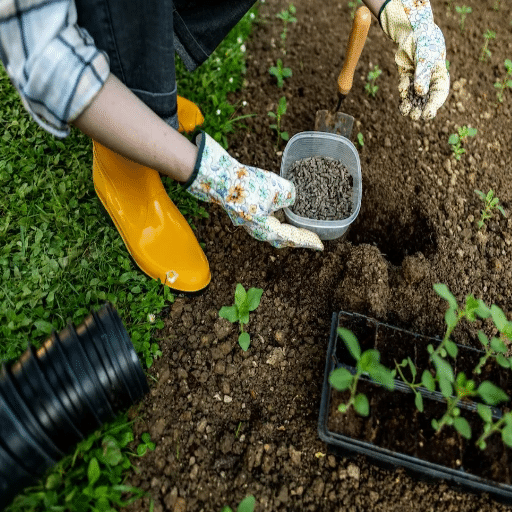
Product Recommendations
In-depth review of the 2025 top-rated low-nitrogen fertilizers, specifically curated for their application in different growth-phase scenarios of plants concerning efficiency, composition, and application benefits. Each product has been selected to boost flowering and fruiting phases without having excessive levels of nitrogen, as in over-fertilization.
1. Dr. Earth Flower Girl Organic Fertilizer
NPK Ratio: 3-9-4
Main Attractions: The fertilizer carries a charge of beneficial microbes and fungi, stimulating healthy root development, and is good for use on roses, flowers, and fruiting trees.
Packaging and Safety: It comes in a resealable bag to prevent the entry of moisture, and states that it supports organic farming certifications.
2. Jobe’s Organics Bone Meal Fertilizer
NPK Ratio: 2-14-0
Features: With materials rich in phosphorus that encourage root growth and fruiting, it is good for outdoor plants and indoor plants while on the flowering stage.
Additional Notes: Biozome provides a formula that aids nutrient cleavage in the soil, making them rapidly absorbable by plants and rendering a lasting fertility to the soil.
3. Espoma Bulb-Tone
NPK Ratio: 3-5-3
Key Features: Even release of nutrients for mainly bulbs, tubers, and perennials. It should be an added feature in the pre-planting and maintenance of flowering plants.
Environmentally Sustainable: Sustainably made with organic materials.
4. Down to Earth Langbeinite
NPK Ratio: 0-0-22
Key Features: Naturally made potassium-rich specialty. It aids in fruiting and resistance to diseases, especially of nutrient-specific crops such as the tomato.
Directions for Use: Best placed before planting or mid-season for supplementation of nutrients.
5. Neptune’s Harvest Fish and Seaweed Fertilizer
NPK Ratio: 2-3-1
Key Features: A liquid fish and seaweed fertilizer that encourages heavy flowering and enhances soil microbial activity.
Flexibility: It may be applied as a foliar spray and soil drench.
6. Greenway Biotech Bone Meal Powder
NPK Ratio: 3-15-0
Key Features: It is highly efficient in phosphorus delivery for hardy root systems and prolific flowering. It is non-GMO and chemical-free, and this makes it suitable for organic growers.
Application Insight: It can be mixed with compost for slow nutrient release.
7. Happy Frog Fruit & Flower Fertilizer
NPK Ratio: 4-9-3
Key Features: Mixed with bat guano, rock phosphate, and mycorrhizal fungi to encourage nutrition and soil biology.
Application Insight: Suitable for container gardening and outdoors in flower beds.
8. Jobes Organics Fertilizer Spikes
NPK Ratio: 3-5-3
Key Features: Nutrient-release spikes were sent into the soil gradually so that flowering plants remain strong but do not go into excess, building nitrates.
Application Insight: Insert directly into the soil, no mixing required.
9. Burpee Bone Meal Fertilizer
NPK Ratio: 6-8-0
Key Features: Balanced with phosphorus and calcium for vigorous root and flower growth. Good for vegetable gardens.
Storage: Long shelf life due to the granulated, moisture-resistant formulation.
10. Safer Brand Bloom Booster
NPK Ratio: 2-4-3
Key Features: A concentrate for increasing flower development and for overall soil health.
Target Usage: Mid to late growth phases of flowering plants.
Important Note: These fertilizers have all been carefully evaluated as suitable for low-nitrogen gardening methods. The right fertilizer depends on the particular needs of the plant, the soil, and the stage of growth. Take heed of the manufacturer’s recommendations before applying for the best results.
User Cases and Testimonials
Case Study 1: Augmenting Yield for Organic Tomato Cultivation
During its flowering and fruiting stages, the mid-size organic tomato farm applied a phosphorus-rich growth formula to solve a deficiency of phosphorus in the soil. Considering every application according to the manufacturer’s dosage guidelines, the grower said in his report that the product had produced the same fruits 25% by quantity over the last season. The farmer also reported larger fruits, better color, and the taste profile was better. Soil analyses done after the fertilizer application indicated a good phosphorus status, meaning the farmer had gotten a good immediate response and some residual effect.
Case Study 2: Restoration of Soil Health in Urban Garden Spaces
An urban community gardening project used the Potassium-Enhanced Fertilizer for the revitalization of beds depleted on rooftop growing platforms. In six months, the participating group was able to record a reduction in plant wilting of 40% in the hottest months, the reason being better water retention and root strength. The plants, including peppers and cucumbers, were 30% more resistant to diseases. The implication was clear in that the fertilizer stabilized soil conditions for sustainable urban agriculture.
Testimony from a Professional Horticulturist
“I have been using the nitrogen-free fertilizer product range for over a year in my own practice. The Calcium-Boost Formula really helped me prevent blossom-end rot in commercial pepper crops while also allowing leaves to remain very healthy. This product has completely changed my approach to nutrient management in sensitive crops.”
Key Insight: Each instance and testimonial serves to indicate what happens when said nutrients are aligned with precise timing and the farmers or users strictly follow the given instructions. This is evidence of the technical feasibility of these fertilizers in agricultural and horticultural environments.
Comparison Table of Features and Benefits
Low nitrogen fertilizers try to enhance roots and fruits, whereas high nitrogen fertilizers seek to enhance the foliage and fast growth.
| Feature | Low-Nitrogen | High-Nitrogen |
|---|---|---|
| Focus | Roots/Fruits | Leaves/Foliage |
| NPK Ratio | Low-N (2-10-10) | High-N (20-10-10) |
| Usage | Flowers/Fruits | Lawns/Crops |
| Risk | Low Burn Risk | High Burn Risk |
| Growth | Balanced | Rapid |
| Timing | Flowering Stage | Early Growth |
| Examples | Bone Meal, Kelp | Urea, Ammonium |
Effective Application of Low-Nitrogen Fertilizers
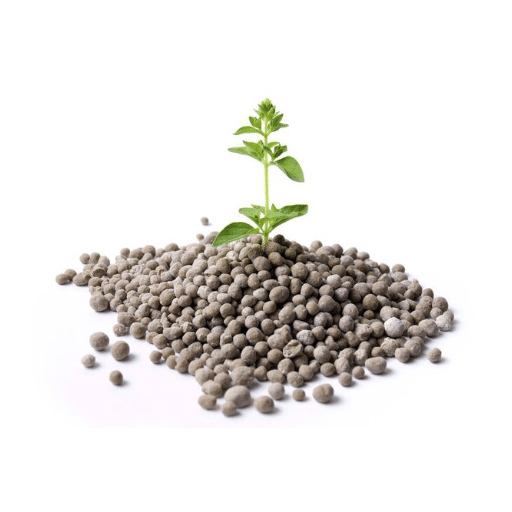
Application Methods and Techniques
With perfect application techniques and timing, the effectiveness of low nitrogen fertilizers can be enhanced to their maximum extent. Moreso, these fertilizers should be applied during the flowering or fruiting stage of the plant’s life when the demand for nitrogen is minimal but the demand for potassium and phosphorus increases to nourish reproductive growth.
1
Soil Incorporation
Best results are gained when you incorporate the fertilizer into the top 6 to 8 inches of soil just before planting and spread it evenly. This gives a facilitating environment that allows nutrient uptake through the root system and, at the same time, limits surface runoff.
2
Surface Application
If you are using low-nitrogen granular fertilizers, apply these onto the soil surface evenly around the root zone, avoiding contact with the plant stem. Areas of localized overload with nutrients might damage the sensitive tissue.
3
Foliar Feeding
Less common for low-nitrogen fertilizers, this application can be used for quick supplementation. Dilute the fertilizer and spray it on leaf surfaces in the early morning or late evening to help with absorption and avoid water loss through evaporation.
4
Drip Fertigation
Low-nitrogen fertilizers may be injected through the drip irrigation to supply nutrients into the root zone with better nutrient utilization and less wastage.
Pro Tip: In order to optimize nutrient bioavailability, keep track of the soil pH and moisture content. Carry out regular soil tests to ascertain the specific fertilizer requirements and make any necessary corrections to application rates. Computation of effective doses (measured in pounds per square foot or according to crop-specific recommendations) is another way to make sure fertilizers are applied correctly and avoid either fertilization deficiencies or fertilizer imbalances.
Frequency of Application for Optimal Results
Determining the optimum frequency of fertilizer application entails a knowledge of the crop’s nutrient requirement and growth cycle. Different crops tend to have different nutrient uptake patterns, and hence, the timing of application will dictate frequency. For example, rapidly growing plants are more likely to need a repeat feeding during active growth stages. To avoid over-fertilization, I follow crop-specific recommendations found in the literature and base my application schedule upon these scientific recommendations.
In addition, I take soil conditions into account. Fertile soils with much organic matter can sustain crops for longer without much frequent application, while sandy or erosion-prone soils might need more frequent applications due to speedy nutrient wash-off. I watch environmental conditions such as heavy rainfall, which can increase nutrient losses, and hence applications need to be scheduled timely manner for the immediate plant needs.
Lastly, I manage application intervals according to the fertilizer type. For example, slow-release formulations require less frequent applications and provide more stable nutrient support for a longer duration. Liquid or fast-acting fertilizers, on the other hand, are applied more often to increase availability. I carefully keep a record of such cycles to secure crop yield and health and to reduce wastage and environmental effects.
Practical Tips for Home Gardeners
A synthesis of evidence-based approaches and a methodological framework is needed to maximize the efficiency and sustainability of any home gardening activities. Have your garden soil analyzed for its nutrient content, pH, and organic matter. This information is essential to determine the best amendments and fertilizers to apply to meet precisely the needs of the soil in your garden.
Apply fertilizers according to the crops you target to grow, their stages of growth, and the nutrient requirements at these stages. For instance, nitrogen is very important for vine growth, while potassium and phosphorus become comparatively more important during the fruiting and flowering stages. Use slow-release fertilizers for their long nutrient supply duration, which causes less nutrient settlement by leaching and breaks stress on the environment. In contrast, liquid fertilizers work very fast when taken up immediately and are good when it is necessary to redress a deficiency, although they demand a more strict application program.
Proper irrigation must also be practiced to prevent runoff and nutrient waste. Give importance to drip or soaker irrigation since it sheds water right into the root zone, from where evaporation can be minimized and the moisture level in the soil maintained. Mulching with organic material such as straw or shredded bark increases water retention in the soil, keeps the temperature in check, and discourages weed growth.
Finally, use crop rotation and intercropping methods to ensure biodiversity while protecting the soil against exhaustion. With cover crops being grown during the off-season, soil nutrients are very naturally replenished as aerations and structure are also improved. Your garden will be productive with the upward tilt following these detailed and data-driven recommendations while making its contribution to ecological balance, going forward.
Frequently Asked Questions (FAQ)
Q: What is low nitrogen fertilizer? Why is it so important?
A: Low nitrogen fertilizer is a plant food with less nitrogen content when compared to the normal nitrogen fertilizers. It is crucial in ensuring balanced plant growth in those requiring less nitrogen to prevent excessive leaf growth at the expense of flower and fruit production. Other nutrients normally included in the fertilizer are phosphorus and potassium, which facilitate the health and growth of plants.
Q: When is it advisable to use a low-nitrogen fertilizer?
A: This nitrogen-deficient fertilizer should be applied at select times in the plant’s growth cycle, generally during flowering and fruiting stages. This is when plants, like tomatoes and flowering plants, need less nitrogen. When used in summer and fall, it improves root and bloom growth yet inhibits leaf growth.
Q: What does a low nitrogen fertilizer do to soil health?
A: Low nitrogen fertilizer does have the potential of being good for the soil due to the prevention of imbalances. It maintains the appropriate nitrogen level that supports the uptake of other essential nutrients without dumping excessive nitrogen content into the soil, causing nitrogen runoff and environmental problems. The improved soil structure and nutrient content can be further enhanced with the application of organic fertilizers such as compost or bone meal.
Q: Do indoor plants use low-nitrogen fertilizers?
A: Yes, low nitrogen fertilizers are favorable for those indoor plants that do well in low nitrogen environments. They support root development and promote flowering instead of enhancing leaf growth, which may render plants thin and weak. Always check the label for specific fertilizer requirements for your indoor plants.
Q: What advantages are worth noting in the use of organic low-nitrogen fertilizers?
A: Organic low-nitrogen fertilizers provide many advantages, such as improving soil structure, enhancing microbial activities and interactions, and releasing nutrients into the soil gradually. Most fertilizers would contain phosphorus and potassium from natural sources, which help in the overall well-being of the plants. Organic fertilizers such as blood meal and manure improve the fertility of the soil, which in the long term will sustain plant growth.
Q: How can I calculate the amount of low-nitrogen fertilizer to use?
A: To determine the exact amount of low-nitrogen fertilizer to apply, the first procedure would be testing the soil for existing nutrients. This will help you to know how much nitrogen, phosphorus, and potassium are deficient in your soil. Also, fertilizer packages will provide you with tips on application rates based on the soil condition and the type of plant you are growing.
Q: What are some applications for low nitrogen fertilizer, and what does high nitrogen fertilizer do?
A: A primary difference lies in the amount of nitrogen. Low nitrogen fertilizers contain a low percentage of nitrogen; hence, they are good for plants that do not need much nitrogen. Mixtures high in nitrogen go to rapid growth and produce lush foliage, and can be used for some crops and lawns. It is important to know the nitrogen level when selecting the fertilizer for your plants.
Q: Are there any risks associated with the use of low-nitrogen fertilizers?
A: Low nitrogen fertilizers, when used with due caution and complementary application, do not present any risk. If misused, they can cause nutrient deficiencies or burn problems. These fertilizers must always be applied according to the recommended rate and at the right time to prevent any damage to their plants. Conversely, using low nitrogen fertilizers when plants require a higher nitrogen concentration for optimum growth will slow their growth.
Q: What are some tips for applying low-nitrogen fertilizer?
A: The best practice for applying nitrogen fertilizer is to apply it at the appropriate times for the particular crop at the particular stage in its growing season, while making sure that it is spread evenly across the soil, fertilizing only for what the plants need. In other words, watering after the fertilizer has been applied can ensure that it goes well into the soil and enables the nutrients to reach the roots of the plants. Always read the label for the fertilizer for specific instructions concerning application methods and application rates.
References
- Physiological and Genetic Mechanisms for Nitrogen-Use Efficiency in Maize
This paper reviews plant responses to low nitrogen stress and nitrogen-use efficiency. - The Use of Fertilizer Nitrogen Applications to Increase the Productivity of Soybean
Discusses nitrogen application strategies and their effects on crop productivity. - On-Farm Implementation of Lower Nitrogen Fertilizer Inputs
Explores nitrogen accounting and organic matter mineralization in agricultural practices. - Nitrogen Use Efficiency – State of the Art
Examines nitrogen use efficiency and its implications for global agriculture. - Nitrogen Management on Agricultural Land in Indonesia
Focuses on nitrogen management practices and their environmental impacts.
Ready to Transform Your Garden?
Choose the right low-nitrogen fertilizer for your plants and watch them flourish with healthier roots, better blooms, and abundant fruits. Remember to always follow manufacturer guidelines and conduct soil tests for optimal results.
🌱 Happy Gardening! 🌱



